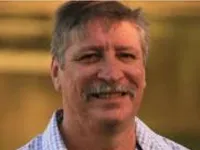
Can renewable energy growth continue without storage?
By Craig FroomeCurrently in Australia like much of Asia, the debate about a carbon tax and what form it should take is holding centre stage in both the political arena and public debate through the media. Looking at the major industrial countries, India has already legislated a carbon tax whilst China is looking at implementing a tax in either 2012 or 2013. South Korea has discussed a number of initiatives, but is still to formally legislate any compulsory taxation measures.
But is the lack of policy really the problem that is stopping a greater roll-out of renewable energy technologies and the move to smart grids? Most of the planned smart grids look at a combination of existing generation technologies with the introduction of embedded generation, primarily through renewable generation sources and battery storage.
Whilst there has been much said about smart-grids and that future communication technologies within the grid will be the key, there is also the fact that they will rely on more generation embedded in the distribution networks. If this is going to occur in the short-term it will need to rely on commercially available intermittent technologies such as solar and wind. This in itself will cause problems unless adequate provision is made for storage and more importantly that adequate supply of storage technologies is available. The problem of storage, whilst not forgotten, receives little attention in the smart-grid debate, but it may be the one technology that slows down the process.
Whilst there is a number of storage technologies available in the commercial market, most are not being produced in a quantity that would provide for a large-scale roll-out and it would take a number of years for production capacity to increase to the level required. For many there would also be the problem of what battery would best suit the needs of a particular application. The technologies available include the traditional Lead Acid as well as Zinc-Bromine, Lithium-Ion, Nickel-Cadmium, Vanadium Redox and Sodium-Sulfur, just to name a few. All of these technologies, whilst commercially available are still only part way through the research, development and deployment cycle.
Apart from technology choice, the current size of the battery units, number of discharge cycles and current cost does not provide us with an economic solution to the storage problem. Those batteries that have been deployed, particularly within Australia, have primarily been installed for research or demonstration purposes and not all of the technologies listed above are currently available in many countries.
Asia in general provides an opportunity to deploy renewable technologies with storage due to the still large reliance on fossil fuels particularly in remote communities. Within the Australian State of Queensland alone, 33 remote communities are still powered by diesel fuel generation plant. Similarly, the power systems quality at those communities at the end of distribution network could also be significantly improved through the addition of battery storage. This provides a number of opportunities for renewable energy, but with peak demand occurring between 6 – 9pm, the problem cannot be resolved without introducing storage options.
The other major issue with distributed generation is the large footprint required for both generation and storage infrastructure. With remote communities this problem may also be overcome as there is generally available land at a cost significantly lower than that being demanded in more urban settlements. This will provide a range of scenarios where systems can be established and tested before being introduced into larger regional networks.
The establishment of these initial systems will be the necessary lead-in to the roll-out of smart grid technology, where communication issues will come to the fore. However, without adequate storage options and production capacity we may still be discussing the smart grid and how it will work in the future for years to come.
Craig Froome, Global Change Institute, The University of Queensland, Brisbane, Australia
T: +61 7 3365 3689 F: +61 7 3346 3299














 Advertise
Advertise











